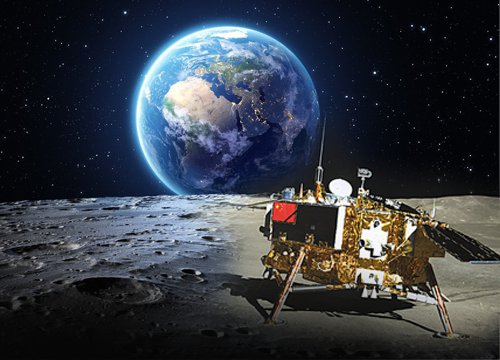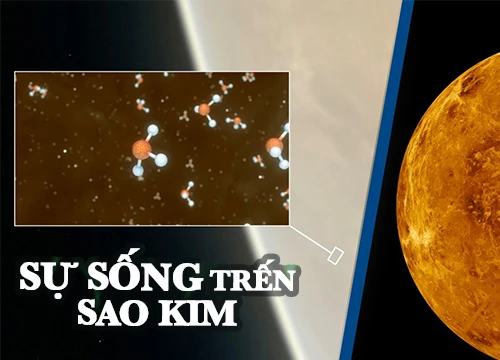What would happen to humanity if the Earth stopped rotating?

5 | 0 Discuss | Share
Being the coldest planet in the Solar System, having an eternal storm the size of Earth and being the smallest gas planet are just a few of the interesting facts about Neptune.
It will not be easy if you want to see Neptune with your own eyes. This object is located about 4.41 billion km from Earth and is very faint, so it cannot be seen with the naked eye. With a pair of binoculars, choose a dark and cloudless night for astronomy lovers to see a small speck of light. If you want to see the blue color of this planet, you will need a small telescope.
Neptune's Formation
Through simulations from the Nice model - is a scenario for the dynamic evolution of the Solar System. It is thought that both Neptune and Uranus formed closer to the Sun and then drifted away. It is theorized that the Solar System formed from a giant rotating ball of gas and dust known as a pre-solar nebula.
Most of these nebulae form the Sun. Also some of its dust continues to merge to create planets. It is hypothesized that Neptune is one of several planets created from these nebula dust. As they grow, some accumulate enough matter that their gravity can hold onto the nebula's leftover gas. Estimates suggest that this formation may have taken place about 4.5 billion years ago. And and the drift away from the Sun started about 4 billion years ago.
Who was the first to discover Neptune?
Neptune was observed by Galileo Galilei in 1613. However, he initially mistakenly thought it was just a star. When he wanted to study it more deeply, but the motion of the planet was too small to detect.
The biggest factor in the discovery that Neptune is a planet and not a star is thanks to the star Uranus. So what is Uranus? That's the star Uranus. Astronomers calculated the orbit of Uranus and found that the planet did not follow their original patterns.
After finding a new planet, the next dilemma is naming. The astronomer Galle proposed the name Janus - the Roman god with two faces.
However, astronomer La Verrier gave the name Neptune - the god of the sea in Roman mythology. In addition he tried to name the planet after himself but did not gain widespread support outside of France. Until December 29, 1846, Struve astronomers came up with the name Neptune. Soon after, Neptune became the name of this new planet.
Neptune is composed mainly of gases in liquid form, which is also a common feature of large planets in the solar system. The planet also has a huge amount of ice made up of water and frozen gases. Astronomers therefore sometimes call Neptune an "ice giant". Neptune has 13 satellites in all and a faint ring system.
Neptune is currently the furthest planet from the Sun as Pluto was no longer considered a planet in 2006. Neptune is one of the gas planets in the Solar System, smaller than Uranus. and has a mass 17 times that of Earth.
Because it is so far from the Sun (about 30 times the Earth-Sun distance), Neptune is extremely cold with an average temperature of minus 214 degrees Celsius. The average temperature on its surface is - 218 degrees Celsius. However, the planet is still emitting a small amount of heat and is thought to be the cause of extremely strong winds with speeds of up to 2,000km/h.
On the surface of Neptune there is also a regularly occurring giant vortex known as the Great Black Spot. It is predicted that in Neptune there are also four seasons, and each season lasts about 40 years.
Neptune has 14 Moons, but Jupiter and Mercury have even more, with 67 and 62 Moons, respectively.
Wind speeds on Neptune can reach more than 2,000km/h, making it the fastest-winding planet in the Solar System.
Only the Voyager 2 spacecraft has ever passed at a speed close enough to capture images of the planet.
Neptune's largest moon is Triton, discovered 17 days after the planet was discovered.
Neptune has an ongoing storm, also known as the Great Dark Spot, which is similar to the Great Red Spot on Jupiter. What makes this storm so unusual is that it is about the size of Earth.
Neptune also has rings like Saturn. These belts are made up of dust and ice. Neptune is the smallest of the four gas planets with an equatorial radius of more than 24,000 km.
There are currently no plans to explore the planet, although NASA has announced its intention to launch a probe here in 2035. A day on Neptune is just over 16 hours long. However, 1 year on Neptune equals 164 years on Earth.
Neptune Structure. 1 - Cloud layer in the upper atmosphere 2 - Atmosphere consisting of Hydrogen, Helium and gases 3 - Hard crust made up of ice of water and other substances 4 - Core of hard rock and ice.
Scientists think that Neptune can still radiate heat because it has swallowed whole planets in the past. They hypothesized that before Neptune and both Uranus were closer to the Sun, they were gradually moving away. Along the way, Neptune has absorbed a planet about twice as large as Earth, and the current heat is a remnant of that collision. The satellite Triton (the name of the sea god's trident) was also "kidnapped" and changed hands.
Neptune was discovered in a very interesting way. The famous astronomer Galilei saw it in the 17th century while observing the sky in the region of Jupiter. However, he mistook it for a star and was therefore not recognized as the discoverer of Neptune.
By the early 19th century, many scientists realized that the orbit of Uranus had a deviation from theory and predicted that there must be a planet outside the star to have an effect on the planet. that path. By the middle of the 19th century, the orbit of this hypothetical planet had been calculated, and real observations had found Uranus at the predetermined position in the sky.
The only human spacecraft to ever fly past Neptune is Voyager 2. It has recorded extremely strong winds on the planet as well as hot geysers on the satellite Triton.
How many moons does Neptune have?
So far we have discovered 14 planets/moons surrounding Neptune. All of them are named after the water gods in Greek mythology. The first moon to be discovered was Triton, just 17 days after Neptune was discovered. It is also the largest of the 14 moons.
Out of the 14 moons, only 7 are regular moons. That is, they orbit Neptune either with a very circular orbit or with a very low eccentricity. These are Naiad, Thalassa, Despina, Larissa, Hippocamp and Proteus.
The remaining 7 moons are irregular moons. Irregular moons rotate in inclined, eccentric, and often retrograde orbits. In order of their distances are Triton, Nereid, Halimede, Sao, Laomedeia, Psamanthe and Neso.
Above is the most general information about Neptune. Hopefully the general information shared above will help you better understand this distant planet.
What would happen to the world if humanity perished?  team youtuber12:22:03 15/09/2020American scientists have discovered that a mass extinction disaster occurs every 62 million years, and this pattern has been repeated over and over. over the past 500 million years. The last mass extinction was 65 million years ago, which means we have been extended by 3 million years, and the extension could end
team youtuber12:22:03 15/09/2020American scientists have discovered that a mass extinction disaster occurs every 62 million years, and this pattern has been repeated over and over. over the past 500 million years. The last mass extinction was 65 million years ago, which means we have been extended by 3 million years, and the extension could end

5 | 0 Discuss | Share

4 | 0 Discuss | Share

3 | 0 Discuss | Share

4 | 0 Discuss | Share

3 | 0 Discuss | Share










5 | 0 Discuss | Report